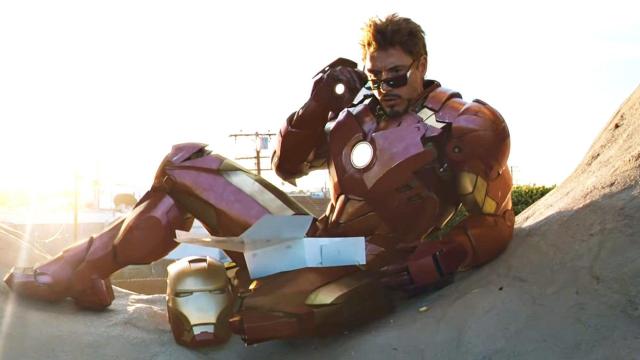Fifteen years ago, on May 2, 2008, Iron Man released in theatres. The Jon Favreau-directed film set off an unprecedented run of sequels, sagas, and franchises that literally saved Marvel from the brink of bankruptcy. The film was critically praised. It was nominated for two Oscars. In 2022 it was even selected for preservation in the Library of Congress. It’s hard to argue with the impact of Iron Man.
Honestly, the whole trilogy was solid. Even if the second movie was weaker than the first and third films, it had moments of smart storytelling, continued the first movie’s reflection of American fears during the Iraq War, and allowed Robert Downey Jr. to expand and inhabit a role that appeared made for him. It was a good series, and it helped set up the larger Marvel Cinematic Universe, which, for a time, was fairly enjoyable!
But the Iron Man trilogy, for all its solid storytelling and the work it did establishing a larger universe, exposed Iron Man’s greatest storytelling flaw. Tony Stark would create something with good intentions. Someone with bad intentions would get their hands on it. Tony Stark would have to create something else to destroy his work. It happens in almost every film where Stark appears, even if he’s not the titular character. More gracious critics would call this Stark’s tragic flaw. Others would call this kind of reliance on a particular conceit across multiple films lazy writing. It’s definitely a bit of both, but more than that, Iron Man’s core storytelling device — the hubris of man brought low by his own creations — shows that studios value sameness. They want people to know what to expect when it comes to Iron Man. They want people to know what to expect when they go to see a Marvel film.
Here’s the thing: the first three films worked because we didn’t know who Iron Man was. He was a recognisable character, but he wasn’t nearly as beloved or well known as Spider-Man. He wasn’t a completely unknown character, but he was, let’s say… fringe for a long time. The problem with the MCU now is that it consistently uses the same writing conceits for the same characters. Audiences were willing to buy that Iron Man “made a mistake born out of his scientific genius” three times, but after Avengers: Age of Ultron in 2013, it really felt like Iron Man writers only only had one trick in the bag.
And now? Every Marvel character has this one trick — this one fatal flaw — that carries them through their trilogies and even into other films where they appear. Sometimes it can be remixed and changed to create something new, exciting, and fun. Thor: Ragnarok is proof that in the hands of a capable director with a vision and the ability to make sweeping, uncompromising sacrifices to the world, a character that appeared tired or uninspired in other films can become fun to watch again. But Ragnarok is an exception, and not a rule. Often we get half-attempted gestures towards change, like we saw in Doctor Strange in the Multiverse of Madness. There was something there, but it never quite worked. At the end of the day, Doctor Strange’s fatal flaws — he has to humble himself despite nearly-unlimited access to power, and has to give agency to other people and trust that they can be the ones to save the day — continue through Multiverse.
The MCU is aggressively fine, but no MCU film will ever have the cultural impact of the original Iron Man trilogy precisely because the lessons learned from the success of the Iron Man trilogy amount to “if it ain’t broke, don’t fix it.” While there have been some standouts among the MCU since Age of Ultron, it is because of the same-ness of the storytelling, the sheer proliferation of media through television and film, and the fact that there seems to be no surprises left that have left many viewers cold on the ongoing adventures of Whatever Man and Hero Lady.
The fact is that there are so many better lessons to be learned from the Iron Man trilogy: be political, give your characters real flaws, have them struggle with their mental health, give them grounded and understandable stakes — and keep your stories focused on the characters, not the sequels. And please, for the love of god, keep your action films under the two-and-a-half hour mark. The Iron Man trilogy helped redefine blockbusters in its time. I’d love to see that happen again. Marvel films in recent years have been reduced to spectacles and events only Marvel fans enjoy, steeped in 30-plus movies of lore and seemingly endless hours of television context, but for a brief four-year moment in between 2008 and 2012, anyone could be a Marvel fan. And that might be what I miss the most.
